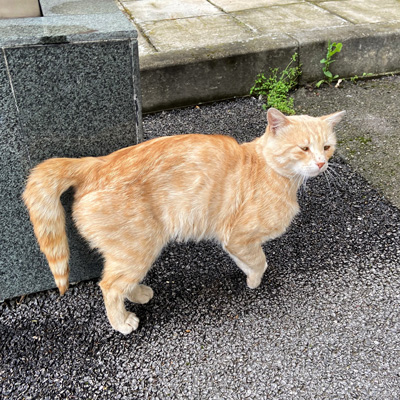Last Updated on 1 day ago by Dr Alisha Barnes

Cat tail pain is more common than most owners realize and it’s often more complex than a simple bump or bruise. Whether caused by trauma, nerve compression, or spinal misalignment, tail discomfort can significantly impact your cat’s quality of life. The good news? There are effective treatment options available, including animal chiropractic care that addresses the root cause rather than just masking symptoms.
Understanding Cat Tail Pain: Anatomy and Function
The tail serves critical functions:
- Balance during jumping and climbing
- Communication with other cats and humans
- Temperature regulation in cold weather
- Coordination during complex movements
The nerves running through the tail connect directly to the spinal cord, which means tail injuries can affect more than just the appendage itself. Damage here can impact bladder control, bowel function, and even hind leg coordination.
When vertebrae in the tail or lower spine misalign, they can compress nerves, restrict blood flow, or create inflammation. Sometimes the problem isn’t in the tail at all – sacral or lumbar spine issues can refer pain down into the tail, similar to how sciatica works in humans.
Common Causes of Cat Tail Pain
Understanding what triggers cat tail injury helps prevent future problems and guides appropriate treatment.
Traumatic causes:
- Door slams (unfortunately one of the most common injuries)
- Falls from heights landing on the tail
- Car accidents or being stepped on
- Rough play or aggressive encounters with other pets
- Children pulling or grabbing the tail
Medical and structural causes:
- Spinal misalignments affecting tail nerve function
- Arthritis in tail vertebrae (especially in senior cats)
- Infections or abscesses near the tail base
- Neurological conditions affecting nerve supply
- Previous injuries that healed improperly
Chronic conditions:
- Stud tail (overactive sebaceous glands at tail base)
- Degenerative disc disease in lumbar spine
- Chronic inflammation from repeated minor trauma
- Nerve impingement from subluxations
Signs and Symptoms of Cat Tail Pain
Cats are masters at hiding discomfort, but once you know what to look for, the signs become obvious. Recognizing cat tail pain early allows for faster intervention and better outcomes.
Behavioral indicators:
- Extreme sensitivity when you touch the tail or lower back
- Excessive grooming or biting at the tail base
- Vocalizing (crying, hissing) when the tail is touched
- Avoiding activities that involve tail movement
- Reluctance to jump up or down from furniture
- Changes in litter box habits or posture
Physical signs:
- Tail held at unusual angle (drooping, kinked, or limp)
- Visible swelling, bruising, or bleeding
- Hair loss around the tail base
- “Dead tail” appearance where the tail hangs limply
- Twitching or involuntary tail movements
Subtle chronic signs:
- Intermittent discomfort that comes and goes
- Stiffness in the lower spine or hips
- Reduced playfulness or energy
- Personality changes (irritability, withdrawal)
- Difficulty with balance or coordination
Severe warning signs requiring immediate veterinary attention:
- Complete loss of tail movement
- Loss of bladder or bowel control
- Visible open wounds or exposed bone
- Signs of tissue death (necrosis) such as blackened tissue
- Paralysis extending to hind legs
Treatment Options for Cat Tail Pain
Conservative Veterinary Care
Most mild to moderate tail injuries start with traditional veterinary management:
Initial treatment includes:
- Rest and restricted activity to prevent further injury
- Pain medications (NSAIDs or other analgesics appropriate for cats)
- Anti-inflammatory medications to reduce swelling
- Antibiotics if infection is present or suspected
- Cold therapy initially, followed by gentle heat after 48 hours
Physical therapy techniques like gentle range-of-motion exercises can help maintain flexibility during healing. However, many veterinarians now recognize that structural issues contributing to tail pain require more targeted intervention.
Animal Chiropractic Care for Cat Tail Pain
This is where animal chiropractic care for cats becomes invaluable. When tail pain stems from spinal misalignment, nerve compression, or chronic musculoskeletal dysfunction, chiropractic adjustments address the underlying structural problem.
How chiropractic helps:
- Gentle adjustments restore proper alignment in lumbar, sacral, and caudal vertebrae
- Relieves pressure on nerves supplying the tail
- Improves blood flow and healing to damaged tissues
- Reduces muscle tension and spasm around the injury
- Enhances overall nervous system function
What to expect during treatment: Feline chiropractic adjustments are extremely gentle – nothing like the dramatic “cracking” you might imagine. We use light pressure and precise movements tailored to your cat’s size and tolerance. Most cats tolerate it well, especially once they realize it brings relief.
Integration with veterinary care: We never work in isolation. Chiropractic treatment for cats is most effective when coordinated with your primary veterinarian. We communicate about findings, treatment plans, and progress to ensure comprehensive care.
For cat owners searching for qualified Animal Chiropractic in Fort Collins, CO and Broomfield, CO or elsewhere, always look for certified animal chiropractors who prioritize collaboration with veterinary professionals.
Surgical Intervention
Sometimes surgery becomes necessary, particularly for:
- Severe fractures that won’t heal properly on their own
- Cat tail broken with complete nerve damage
- Tissue necrosis requiring amputation
- Chronic conditions that haven’t responded to conservative care
Post-surgery chiropractic support: Even after surgical intervention, chiropractic care can aid recovery by maintaining proper spinal alignment, reducing compensatory strain in other areas, and supporting optimal nerve function during healing.
Monitoring and Follow-Up
Regardless of treatment approach, ongoing monitoring ensures problems don’t worsen or recur:
What to watch for:
- Progressive improvement in mobility and comfort
- Return of normal tail carriage and movement
- Resolution of behavioral changes
- No development of new symptoms
Recovery timelines vary. Mild injuries may improve within days, while cat tail nerve damage or chronic conditions might require weeks or months of treatment.
See more: Animal Chiropractic for Tail Bone Injuries: A Complete Guide
Frequently Asked Questions About Cat Tail Pain
Can chiropractic help cat tail pain?
Yes, especially when pain stems from spinal misalignment, nerve compression, or chronic musculoskeletal dysfunction. Chiropractic adjustments address the structural issues contributing to tail discomfort.
Can a broken tail heal on its own?
Minor fractures near the tail tip sometimes heal without intervention, but most tail fractures benefit from veterinary assessment and treatment. Never assume a cat tail broken will heal properly without professional evaluation.
How do I know if my cat’s tail pain is serious?
Seek immediate veterinary care if your cat shows loss of bladder/bowel control, complete tail paralysis, visible wounds, or signs of tissue death. Persistent pain lasting more than 48 hours also warrants professional evaluation.
Hope and Healing for Cat Tail Pain
Cat tail pain doesn’t have to be a permanent condition affecting your feline friend’s quality of life. Whether caused by trauma, spinal misalignment, or chronic conditions, multiple treatment options exist – from traditional veterinary care to natural pain relief for cats through chiropractic intervention.
Key takeaways for cat owners:
- Recognize the signs of tail pain early for better outcomes
- Don’t assume tail injuries are minor – proper assessment matters
- Chiropractic care offers effective treatment for nerve and structural issues
- Prevention through safe handling and environmental awareness reduces injury risk
- Collaborative care between veterinarians and chiropractors produces best results
Is your cat showing signs of tail discomfort? Don’t wait for the problem to worsen. If you’re searching for a qualified animal chiropractor near me or specifically cat chiropractic near me, look for certified professionals who work collaboratively with veterinarians and prioritize your cat’s comfort and safety.
Because every cat deserves to swish, twitch, and curl their tail without pain.
